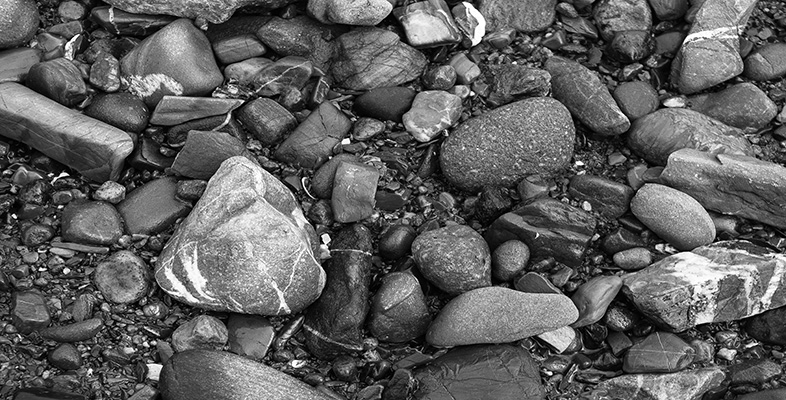2.4 Collecting quantitative data
How can you collect quantitative data that summarise the nature of a habitat when it is three-dimensional? How, in fact, do you collect quantitative data?
Multi-storied habitats where the components have a different scale are usually recorded storey by storey, but using much the same methodology. There are two standard ways of collecting data quantitatively. The first involves recording species present within a standard area such as 10 cm × 10 cm, 0.5 m × 0.5 m, 1 m × 1 m, or 10 m × 10 m. It's all a matter of scale: 1 m × 1 m or smaller would be used as the unit for recording species in the ground layer whereas 10 m × 10 m would be used to record trees. Any device used for this purpose, whether it is one or more tape measures or a wooden frame, is called a quadrat. Within individual quadrats it is often possible to record the actual numbers of each species, or their presence or absence within each of a number of quadrats to show their frequency. Alternatively, the area occupied by each species can be recorded to give cover measurements.
A modification of the square quadrat that is more accurate – so particularly useful in habitats that have long lists of species – is the point quadrat. In such environments, sorting out which species are present (and especially the area they occupy) in even a 0.5 m × 0.5 m quadrat can be very laborious. Point quadrats are, in essence, minimal area quadrats. Each species touched by a sampling pin as it passes through the vegetation before reaching the soil surface is recorded as being present at that point.
An alternative to area counts is time counts, i.e. recording the number of organisms seen in a set period of time (e.g. 1 or 5 minutes) (assuming that diligence does not alter!). It may not surprise you that this method is generally used to record numbers of organisms that move around. Thus, flying insects can be collected in a sweep net which is moved back and forward as the collector walks onward for a given time. Ground-living, but mobile, insects such as beetles or slugs can be collected in submerged traps that the researcher visits once or twice a day. Woodland mammals, such as mice, voles, squirrels and stoats, are collected in traps that close upon the animal when they enter it (bedding and food must be available while the mammal remains trapped because recording should never be allowed to affect the size of the population). Numbers of relatively sedentary animals (such as snails and limpets) can be counted using either area or time counts.
Question 10
(a) How would you record data about species present and their numbers in (i) the tree layer of a woodland and (ii) a moss layer of a lawn?
(b) How could you determine the frequency and distribution of greenfly in a garden?
Answer
(a) 10 m × 10 m quadrats would probably be appropriate for recording tree species and numbers in a woodland. The moss layer in a lawn could be recorded using quadrats as small as 10 cm × 10 cm (mosses are much smaller than flowering plants and grasses).
(b) Greenfly spend a lot of their life with their mouth parts stuck inside plants, but they are mobile for periods of time. When attached they can be counted per unit area, but when they are mobile, traps and timed samples are appropriate.
One of the last questions that needs to be resolved in the field is how you would know whether you had collected enough data to have a reasonably reliable picture of the organisms present and their relative numbers. The number of replicate samples made depends entirely on the variability within the habitat. If there are many species you need more replicates to get reliable results, i.e. results that tell you which organisms are truly ‘dominant’, ‘frequent’ or ‘occasional’.
